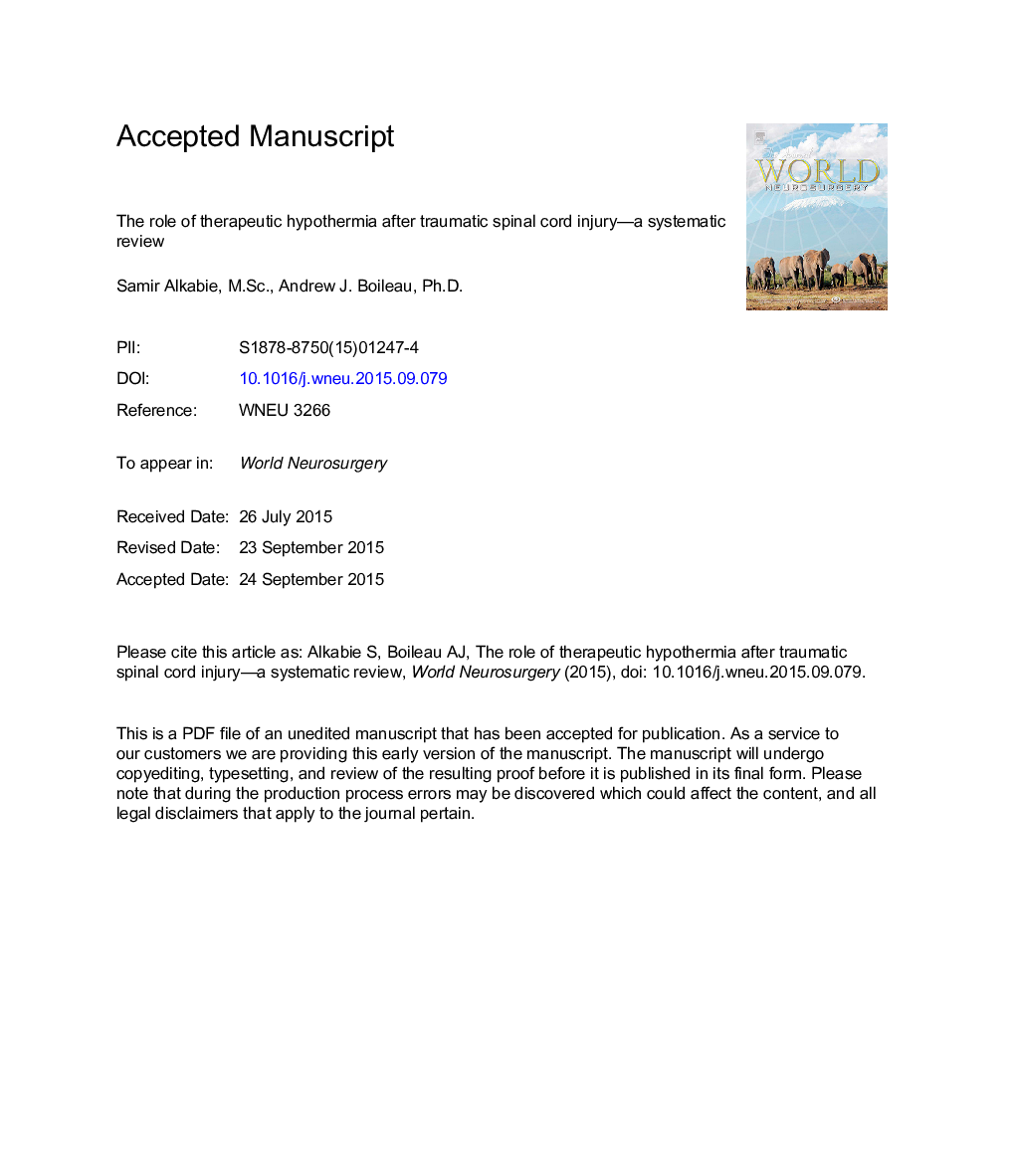| Article ID | Journal | Published Year | Pages | File Type |
|---|---|---|---|---|
| 6044785 | World Neurosurgery | 2016 | 50 Pages |
Abstract
Although variability exists in the literature, therapeutic hypothermia most likely confers neuroprotection after spinal cord trauma by diminishing the destructive secondary cascade. The available clinical data suggest that regional and systemic hypothermia is a relatively safe and feasible initial treatment modality for patients with acute SCI when combined with surgical decompression/stabilization with or without steroids. However, establishing a clinical role for therapeutic hypothermia after spinal cord trauma will invariably depend on future well-designed, multicentered, randomized, controlled clinical trial data.
Keywords
NSCMotor deficit indexMDAGSHSSEPMDITAAAAsiaSpinal cord injurythoracoabdominal aortic aneurysmAmerican Spinal Injury AssociationIschemiaBasso-Beattie-Bresnahanterminal deoxynucleotidyl transferase–mediated deoxyuridine triphosphate nick-end labelingTraumaTUNELCNSBBBNeural stem cellcentral nervous systemsciNeuroprotectionClinical studiesExperimental studiesHypothermiaSomatosensory-evoked potentialsGlutathione
Related Topics
Life Sciences
Neuroscience
Neurology
Authors
Samir Alkabie, Andrew J. Boileau,
